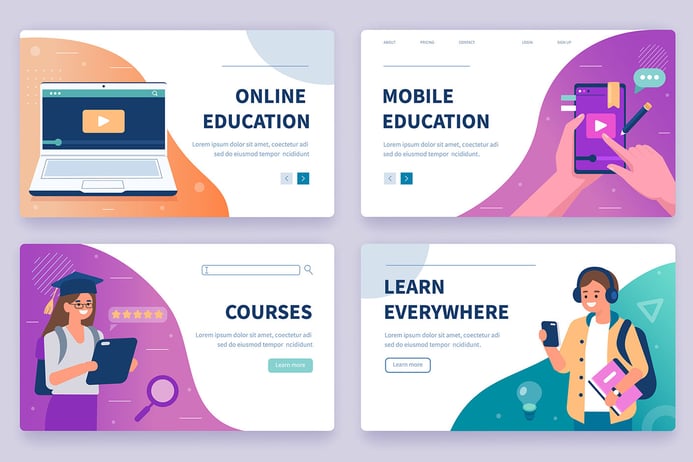An overview of how EHL has developed and implemented effective blended learning models, not just to meet the recent demands of the COVID pandemic, but with a view to modernizing the possibilities of teaching in general. Dr Achim Schmitt, Associate Dean of Graduate Programs, shares actionable insights on how to best maximize ROI using effective digital teaching models.
Blended learning has been operational at EHL since 2017 and is therefore nothing new to the school’s teaching methodology. The blended learning approach was set up to enable us to use digitalization to improve our students’ learning experience. Our philosophy has been not to cut costs but to maximize the individualization of learning content for each student. Each “human interaction” is based on the application and transfer of theory to practice. The theory was carefully built in online components that have been then subsequently enriched by face-to-face classroom components that heavily leverage EHL’s academic and business network.
INVEST IN EDUCATION TOOLKIT
With this 10-step process, you will have all the tools you need
to master the critical areas of a successful school.
Here are 5 steps on how a school can invest in digital programs to maximize ROI:
1. Online learning increases the ROI of individual participants
- Individual learners become more flexible in the learning approach (pace, timing, emphasis on certain aspects).
- Online learning components provide the theoretical basis that can be put into action with a simultaneous offline component. This allows students to transfer their theoretical insights more easily into practice, as experiences and application are discussed during “live” sessions.
- Peer-to-peer learning is also improved as everybody has a similar knowledge base (instead of varying levels of knowledge when a specific topic is taught in the classroom).
- Students are helped to recall knowledge by being able to revisit vital sections of the learning environment that suits their needs (i.e. consumption of knowledge at their permanent disposal).
2. Consider online learning as an investment, not a of way cutting costs
- Online learning is not cheap when it is well done.
- Creating engaging content, exercises and activities that are drivers of student commitment and satisfaction.
- Properly invest in your digital assets as a means to complement the students' classroom experience and the faculty's approach for an engaging learning environment.
- Invest in order to have a product that will increase ROI in the long run. Properly done, it will increase employee retention, motivation and the skills of your faculty. Ultimately it is an investment in training.
3. Creating synergies leverages your investments across programs
- Learning objectives can be re-purposed and adapted to different contexts, learner groups and age groups to make the most out of an existing online asset.
- Parts of an asset can be implemented in another asset which can, combined with add-ons and editing, turn into a whole new course or training program.
- Through thinking about how the core content can be adapted and tweaked to suit other target groups, synergies can be formed across programs and assets can be leveraged.

4. Volume and location are not tied to a physical asset
- Through the timeliness and availability of online assets, a much wider and larger population can be reached than in a traditional face-to-face learning environment.
- Bigger volumes and more reach can, in turn, allow you to create economies of scale, increase your brand reputation and provide you market access. These are indirect ROI benefits linked to initial investments.
5. A platform for growth
- Blended learning allows you to focus and customize the physical components and spend more time to invest in what specific customer groups needs. This provides not only synergies but allows for flexibility and individualization.
- Providing experiential and blended learning options can thus help to create “customer loyalty” for life-long learning, because self-paced training will enable them to choose the training that best suits their needs.
- COVID-19 has forced the world to increasingly apply blended learning systems which are very likely to stay in place after the crisis, given their multiple benefits such as flexibility, adaptability and cost-saving in the long run.
Conclusion
Blended education models need to have a vision on how they fit into a school’s long-term identity and teaching philosophy. At EHL, our online education models strongly support the school’s overall mission and identity to maintain service excellence and leadership for the future. This allows EHL to remain agile and at the forefront of the educational landscape.




